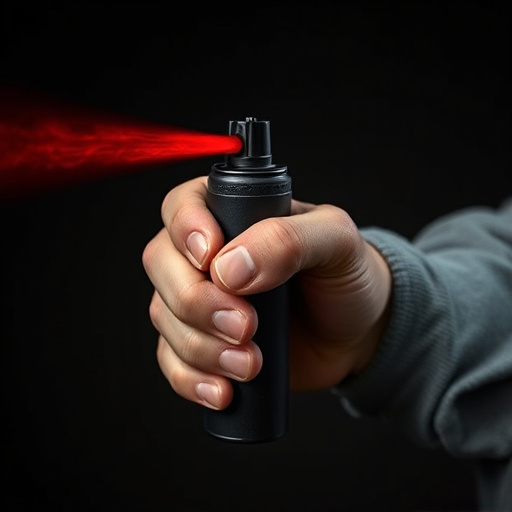Pepper spray, a popular civilian defense tool, temporarily disables attackers without permanent harm but has limitations. Proper removal techniques, like using soap, water, and neutralizing solutions, are crucial after its use. Removing pepper spray from clothing involves quick action: soak in water and detergent for 15-20 minutes, gently wash with cold water, and rinse thoroughly. Understanding local laws and safety precautions, including secure storage and medical attention if needed, is essential when using pepper spray for self-defense.
“Defensive spray has emerged as a popular self-defense tool for civilians, offering a quick and effective means of deterring potential attackers. This article delves into the world of pepper spray, exploring its advantages and constraints in civilian protection. We’ll guide you through essential techniques to ensure effective application, including tips on removing pepper spray from clothing. Additionally, legal considerations and safety precautions will be highlighted to empower individuals with knowledge in this crucial self-defense resource.”
- Understanding Pepper Spray: Benefits and Limitations for Civilian Protection
- Effective Application Techniques: How to Remove Pepper Spray From Clothing
- Legal Considerations and Safety Precautions When Using Pepper Spray for Self-Defense
Understanding Pepper Spray: Benefits and Limitations for Civilian Protection
Pepper spray, a powerful tool for personal defense, has gained popularity among civilians seeking protection against potential threats. It works by irritating the eyes and respiratory system, temporarily incapacitating an attacker, allowing the user to escape or seek help. This non-lethal self-defense mechanism offers several advantages. For one, it’s easy to use; a simple spray can stop an aggressor without causing permanent harm, making it ideal for individuals of varying skill levels in self-defense. Moreover, pepper spray is legal in many areas, providing civilians with an accessible option for personal safety without the need for firearms or other potentially lethal weapons.
However, understanding its limitations is crucial. Pepper spray may not always remove an attacker, and some individuals, like those with respiratory conditions, may be more susceptible to its effects. Additionally, removing pepper spray from clothing after use can be challenging, requiring specific techniques such as using soap, water, and neutralizing solutions. Despite these drawbacks, when used appropriately, pepper spray remains a valuable tool for civilians seeking to protect themselves in various situations, especially when paired with other self-defense strategies.
Effective Application Techniques: How to Remove Pepper Spray From Clothing
When it comes to effective defensive spray usage for civilian protection, understanding how to properly remove pepper spray from clothing is paramount. If you find yourself in a situation where pepper spray has been sprayed on your garments, quick action can minimize discomfort and prevent long-lasting stains. The first step is to quickly remove any contaminated clothing, taking care not to rub or wipe the affected areas, as this can spread the irritant further.
Soaking the affected clothes in a mixture of water and mild detergent for about 15-20 minutes helps to break down the pepper spray molecules. After soaking, gently wash the clothing using cold water and a gentle cycle, avoiding high heat or aggressive agitation. Rinse thoroughly with cool water until the water runs clear, ensuring no residue remains. For stubborn stains, repeat the soak and wash process, and consider spot-treating with a specialized cleaner if needed.
Legal Considerations and Safety Precautions When Using Pepper Spray for Self-Defense
When using pepper spray for self-defense, it’s crucial to understand the legal considerations and safety precautions involved. In many jurisdictions, carrying and using pepper spray is regulated, with specific laws governing its possession, use, and storage. Before deploying any self-defense tool, including pepper spray, ensure you are familiar with local legislation to avoid legal repercussions. Some regions require permits or registration, while others have restrictions on the type and amount of spray permitted.
Safety precautions are paramount when handling pepper spray. Always read and follow the manufacturer’s instructions for proper use and removal from clothing. In case of accidental discharge, quickly remove any clothing or materials contaminated with the spray to prevent prolonged exposure. Ensure thorough washing of affected areas with soap and water, and seek medical attention if needed. Additionally, store pepper spray in a secure location, out of reach of children and unauthorized individuals, to maintain its effectiveness and prevent misuse.
Defensive spray is a powerful tool for civilians seeking protection, but understanding its application and legal boundaries is crucial. By learning effective removal techniques like those discussed for getting pepper spray off clothing, users can mitigate risks and ensure safety. Remember, responsible use and knowledge of local laws are key when considering civilian defensive spray as a self-defense mechanism.
